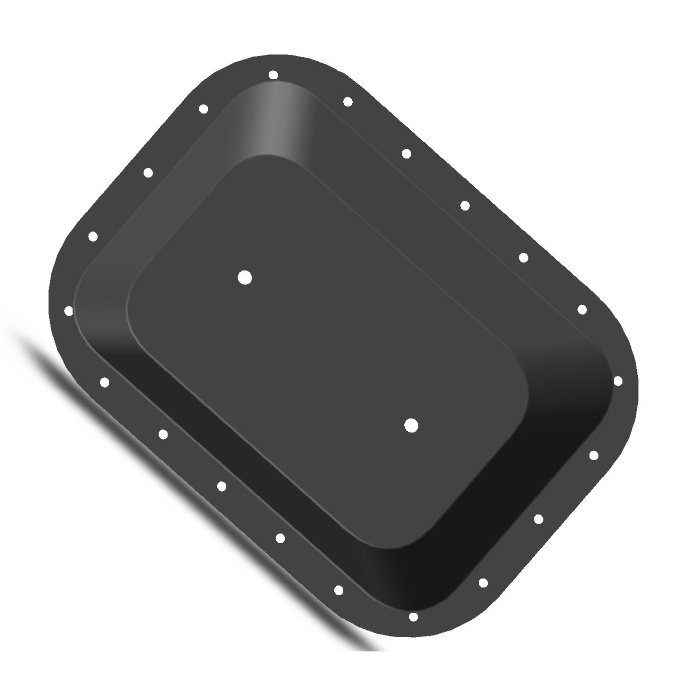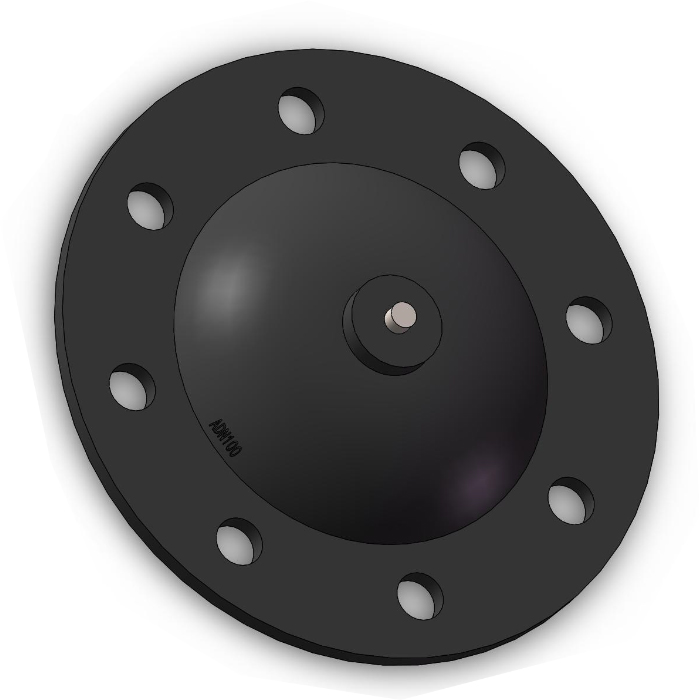We strive to maintain the highest quality standards and meet the needs of our customers. GENERAL SEALTECH’s main business focuses on the design, development, manufacturing, and related mold development of diaphragms.
We mainly produce Rolling diaphragm,Diaphragm Valve pump Diaphragms,Teflon / PTFE Diaphragm,Gas meter diaphragms,Turbo Actuator Waste-gate Diaphragms,Rubber diaphragms, etc. They are used to seal valves for oil, air, and water or as absorbers. We also offer customized molded products that are produced based on customer samples.
| Product Name | well pump diaphragm |
| Materials | AEM,NBR,Silicone,HNBR,FKM,etc |
| Brand Name | GENERAL SEALTECH |
| Place of Origin | Hangzhou,China |
| Product Type | Diaphragm |
| Colors | yellow,Recommended black |
| Sample | Available |
| Hardness | 20~90 Shore A diaphragm for regulator |
| Packing | PE Bag+Carton |
| OEM/ODM | Support |
| Export region | America,Asia,Africa… |
| Export Country | USA,France,Italy,Australia,India,Afghanistan,Kazakhstan…etc |
| Properties | Chemical Resistance,Steam Resistance,Abrasion Resistance…etc |
| Size | DN max = 2000mm, all other smaller sizes will per customer demands |
| Warranty | 1 Year |
| Function | Seal for Valve,Electrical Appliances,etc |
| After-sale Service | Online technical support |
| Certification | PAHS,NSF,CCS,National Sanitary Certificate,RoHS,etc |
| Packaging | carton or according to requirements of the customers |
| Lead time (days) | 7-15 (To be negotiated) |
| Supply Ability | 50000-200000 Piece/Pieces per Month |
Please note: The above table data is for reference only. For specific information, please contact us.
well pump diaphragm is a material and technology that helps to achieve specific functions or protocols. It is usually used to control the flow of matter and maintain stable states between various fluids in the system.
The diaphragm has strong wear resistance, but it is easily damaged during installation. If cracks appear, they should be reinstalled in a timely manner;
During normal use, check the sealing condition of the diaphragm to prevent water leakage;
Please do not change the installation position of the diaphragm product during use to avoid affecting the effect.
All are made of materials that comply with national safety standards, ensuring the safe use of industrial diaphragms.
well pump diaphragm—FAQs Guide
2.Are there well pump diaphragm designed for quick and easy replacement to minimize downtime in industrial processes?
3.Can well pump diaphragm be used in applications requiring compliance with industry standards, such as FDA, ASME, or ISO?
4.What is the role of well pump diaphragm in controlling the flow of aggressive or corrosive chemicals in chemical processing applications?
5.Can well pump diaphragm be used in both dynamic and static sealing applications, and what are the differences in their design and performance?
6.As a well pump diaphragm manufacturer,how can we guarantee quality?
7.What is the expected service life of well pump diaphragm, and how does it vary depending on factors like material and usage?
8.Are there well pump diaphragm designed for pulsation dampening or shock absorption in hydraulic systems?
9.Can well pump diaphragm be used in air-operated or pneumatic systems, and how do they contribute to system functionality?
10.How are well pump diaphragm designed to resist abrasion and wear in applications with abrasive media?
11.Can well pump diaphragm be used in medical devices, and what biocompatibility standards do they need to meet?
12.Are well pump diaphragm used in safety relief valves and pressure relief devices to prevent overpressure situations?
1.What are the common materials used in diaphragm manufacturing, and how do they impact the diaphragm’s performance?
Common materials used in diaphragm manufacturing include rubber, silicone, neoprene, polyurethane, and polyester. Each material has its own unique properties that can affect the performance of the diaphragm.
Rubber is a popular choice for diaphragms due to its flexibility and durability. It is also resistant to heat, chemicals, and abrasion. However, rubber can be prone to cracking and tearing over time.
Silicone is a synthetic material that is highly resistant to heat and chemicals. It is also very flexible and can be used in a wide range of applications. However, silicone can be prone to tearing and is not as durable as rubber.
Neoprene is a synthetic rubber material that is highly resistant to heat, chemicals, and abrasion. It is also very flexible and can be used in a wide range of applications. However, neoprene can be prone to cracking and tearing over time.
Polyurethane is a synthetic material that is highly resistant to heat, chemicals, and abrasion. It is also very flexible and can be used in a wide range of applications. However, polyurethane can be prone to cracking and tearing over time.
Polyester is a synthetic material that is highly resistant to heat, chemicals, and abrasion. It is also very flexible and can be used in a wide range of applications. However, polyester can be prone to cracking and tearing over time.
2.Are there well pump diaphragm designed for quick and easy replacement to minimize downtime in industrial processes?
Yes, there are diaphragms designed for quick and easy replacement to minimize downtime in industrial processes. These diaphragms are typically made of materials such as rubber, silicone, or PTFE, and are designed to be easily replaced without the need for tools or special equipment. Additionally, some diaphragms are designed with quick-connect fittings to further reduce downtime.
3.Can well pump diaphragm be used in applications requiring compliance with industry standards, such as FDA, ASME, or ISO?
Yes, diaphragms can be used in applications requiring compliance with industry standards, such as FDA, ASME, or ISO. However, the specific requirements of the application must be taken into consideration when selecting the appropriate diaphragm material and design.
4.What is the role of well pump diaphragm in controlling the flow of aggressive or corrosive chemicals in chemical processing applications?
Diaphragms are used to control the flow of aggressive or corrosive chemicals in chemical processing applications. They act as a barrier between the chemical and the process equipment, preventing the chemical from coming into contact with the equipment and causing corrosion or other damage. Diaphragms are also used to regulate the flow of the chemical, allowing for precise control of the process.

5.Can well pump diaphragm be used in both dynamic and static sealing applications, and what are the differences in their design and performance?
Yes, diaphragms can be used in both dynamic and static sealing applications. The main difference between the two is in the design and performance.
Dynamic sealing applications require a diaphragm that is designed to withstand the constant movement and pressure of the application. This type of diaphragm is usually made of a flexible material such as rubber or silicone, and is designed to flex and move with the application.
Static sealing applications require a diaphragm that is designed to remain in a fixed position and provide a tight seal. This type of diaphragm is usually made of a rigid material such as metal or plastic, and is designed to remain in a fixed position and provide a tight seal.
6.As a well pump diaphragm manufacturer,how can we guarantee quality?
Always a pre-production sample before mass production;Always final Inspection before shipment.
7.What is the expected service life of well pump diaphragm, and how does it vary depending on factors like material and usage?
The expected service life of diaphragms can vary greatly depending on the material and usage. Generally, diaphragms made of rubber or elastomeric materials can last anywhere from 5 to 10 years, depending on the application and environment. Diaphragms made of metal or plastic can last much longer, up to 20 years or more. Factors such as temperature, pressure, and chemical exposure can also affect the service life of diaphragms.
8.Are there well pump diaphragm designed for pulsation dampening or shock absorption in hydraulic systems?
Yes, there are diaphragms designed for pulsation dampening and shock absorption in hydraulic systems. These diaphragms are typically made of rubber or elastomeric materials and are designed to absorb the shock and vibration of the hydraulic system. They are often used in applications such as hydraulic cylinders, pumps, and valves.

9.Can well pump diaphragm be used in air-operated or pneumatic systems, and how do they contribute to system functionality?
Yes, diaphragms can be used in air-operated or pneumatic systems. Diaphragms are flexible membranes that are used to separate two different areas of a system. They are used to control the flow of air or other gases in a system. They can be used to regulate the pressure of the system, to control the flow of air, and to act as a check valve. Diaphragms can also be used to dampen vibrations and reduce noise.
10.How are well pump diaphragm designed to resist abrasion and wear in applications with abrasive media?
Diaphragms are designed to resist abrasion and wear in applications with abrasive media by using materials that are highly resistant to abrasion and wear. These materials include polyurethane, rubber, and other elastomers. The diaphragm is also designed with a thicker wall and reinforced edges to provide additional protection against abrasion and wear. Additionally, the diaphragm may be coated with a protective material such as a fluoropolymer to further reduce wear and tear.
11.Can well pump diaphragm be used in medical devices, and what biocompatibility standards do they need to meet?
Yes, diaphragms can be used in medical devices. The biocompatibility standards that diaphragms need to meet depend on the application and the intended use of the device. Generally, diaphragms used in medical devices must meet the requirements of ISO 10993-1, which outlines the general requirements for biocompatibility. Additionally, depending on the application, the diaphragm may need to meet additional requirements, such as those outlined in ISO 10993-5 for cytotoxicity, ISO 10993-10 for irritation and sensitization, and ISO 10993-11 for hemocompatibility.
12.Are well pump diaphragm used in safety relief valves and pressure relief devices to prevent overpressure situations?
Yes, diaphragms are commonly used in safety relief valves and pressure relief devices to prevent overpressure situations. The diaphragm is a flexible membrane that is designed to open when the pressure inside the device reaches a certain level, allowing the pressure to be released.

Tags: accelerator pump diaphragm assembly,1954 fuel pump diaphragm,accelerator pump diaphragm,356 fuel pump diaphragm,rubber diaphragm for pump,stihl 026 carb pump diaphragm

